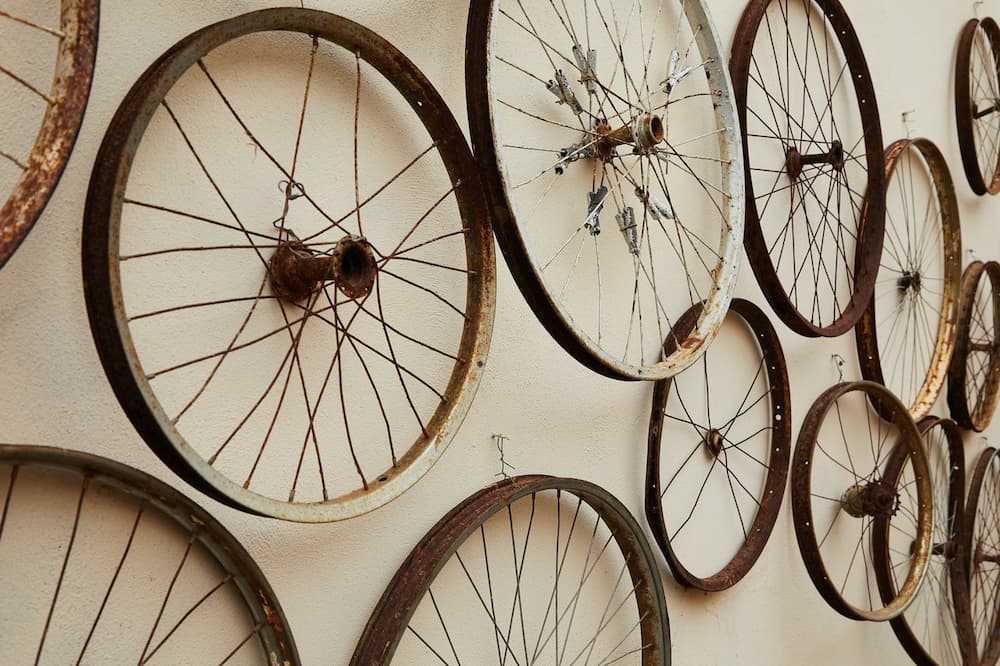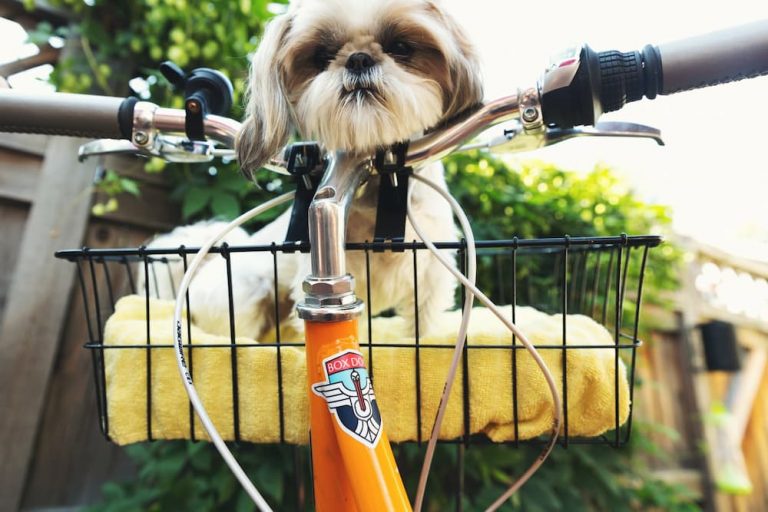How To Carry Extra Wheels On Bike?
One of the more rarely asked questions among cyclists is how to carry extra wheels on a bike. Who needs an extra bike wheel anyway? Well, a lot of people do.
Although not a regular practice, cyclists who like to race always keep a spare wheel, just in case. If you’ve been out shopping for your bike wheels, you would also need to find a way to carry them home on your bicycle, if that’s the only ride you have.
At first, though, transporting the spare while you are on your bike can feel like a lot of work. We’re not saying there’s no effort involved, but lucky for you, we’ve gathered a few of the simpler ways in which you can do so.
As an Amazon Associate, I earn from qualifying purchases made through links in this post at no extra cost to you.
Contents
How to Carry Spare Wheels on Bike?

When planning the transport of extra wheels on your bicycle, keep in mind that you’d need to manage the weight of your bike for safety reasons whenever you are carrying anything on your bike.
Other than that, the rider’s comfort and ease of pedaling are similarly important. Taking it all into consideration, here are a few possible ways that could help you take that extra wheel home!
Attach To Your Backpack
A lot of people are still alien to the idea of having a special carrier to have extra wheels transported on a bicycle. While that may be a more sporty and professional way of carrying wheels, the easier and more feasible option to have your extra wheels get from one point to another is strapping the wheels on your cycling backpack.
There are several options you could try. Duct tape is a popular choice when it comes to strapping the wheels on the backpack. You may use one of the loops on the bag’s top. Before that, you would need to duct both wheels together by laying them on top of each other.
In case you are worried that the axle ends could bruise your back, you can either insert a hard board or book in your back to create protection. Foam around the axle and some cushioning in your bag also work to protect your back from the poking axles.
Bungee cords also work equally well for cording the wheels together.
Another creative way to carry extra wheels without actually adding any weight to the wheels is by simply folding up terrain tires into a small loop and taking the folded tire in your messenger bag or backpack.
On Rear Rack
CyclingDeal Bike Bicycle Cargo RackCHECK CURRENT PRICE
When your bicycle is equipped with a rear bike rack, the task of carrying just about anything becomes much simpler.
Likewise, a wide rear rack can be used to tie down one or two spare wheels. To do this, you would need to use premium grade bungee cords or zip ties.
Attach To Pannier
Roswheel 14892 3 in 1 Multifuction Bicycle Expedition Touring Cam PannierCHECK CURRENT PRICE
Instead of tying the wheel to the frame of the rear rack, you might prefer placing a pannier bag on the rear rack. What this does is provide more flat space and support on both sides of the wheels. You could consider investing in one of these pannier bags, where the angled corner design would provide a platform for the edges of the wheels to rest.
What is great about pannier bags is that most do not require much time or any tool to install into the rack. The Velcro straps do the job of securing the bag firmly. On top of these you can rest the extra wheels with ease, and tie them up on each side and the center to create a rattle free and wobble-free setup.
In One Hand
I am sure you have seen someone ride a bike with one hand on the handlebar and the other carrying one or two spare bicycles. As uncomfortable as this might look, cyclists carry the wheels without much hassle.
Carrying the extra wheels on one hand as you pedal is a doable option but would largely depend on whether you are comfortable on the ride while having to hold something with considerable weight all the while.
You would want to position the wheels towards the center of the bicycle as much as possible, just to make sure the weight distribution is more even. However, for people with larger bikes and more petit body structures, this way of carrying wheels might throw off the balance.
We only recommend using this method if you have a short distance to cover with the spare wheels in hand. Your hands could be vulnerable to bruises if you travel for too long in this setup.
Bike Trailer
Aosom Foldable Bike Cargo TrailerCHECK CURRENT PRICE
One-wheeler bike trailers are one of the more traditional ways for cyclists to carry space wheels when riding bicycles. Bike trailers are versatile carriers to have with your bike since you can carry anything from heavier loads to the lightest in your trailer.
For carrying wheels, we particularly prefer the one-wheeled trailer because they are much smaller, although large enough to hold a couple of wheels strapped or taped together. With trailers, you do not have to worry about poking axles on your back or snapping ties on your rear rack.
If you have to carry your spare wheels more often, trailers can help save a lot of hassle and time before you ride out every time. We surely see the issue about storing a trailer when it is not in use. Furthermore, trailers are the more costly option if you are willing to carry the extra wheels only once in a long while.
DIY Spare Wheel Carriers
Who doesn’t love a specialized bike tool, designed specifically only to carry the task it is meant to? Here, we are talking about spare wheel carriers are that designed to only carry spare wheels when you are riding on your bicycle.
If you are never seen how one of these carriers looks, they are more like a bent piece of aluminum rod. The bent shape allows the carrier to create space and balance. The aluminum carriers are designed with holes at each end of the rod so that either of the ends attaches to the front wheel and the spare tire axle.
To make the front wheel more stable, some cyclists like to add toe straps and washers so that the wheels detach more easily. The carrier allows the wheels to sit on it within seconds, also meaning that the wheels attach and detach in seconds without much complication.
While the carrier makes sure no other bicycle part is congested with spare tires, the problem with these is how it becomes a difficult task to take tight turns. moreover, with more surface area being added from the one or two extra wheels, you can be sure you’d need to put in more effort in pedaling because of the increased air resistance.
Spare wheel carriers work best for cyclists who ride over longer and straighter roads. Sporty racers are the ones to prefer these carriers more than casual cyclists.
Final Thoughts
Carrying spare wheels while you have to focus on the road, and your safety is not as easy as carrying flowers on the front basket or carrying a box of pizza on the rear rack. Having said that, except for a few nooks and discomforts, you can get the job done if you know how to carry an extra wheel on a bike the proper way.
Strapping extra wheels to the bag pack is by far the most common method used by cyclists to have their wheels transferred from one place to another.
Rear racks and trailers, in a similar fashion, are also a more traditional approach. Spare wheel carriers are unheard of, however, they are specialized and designed to carry spare wheels without burdening oneself.
Additional Resources









